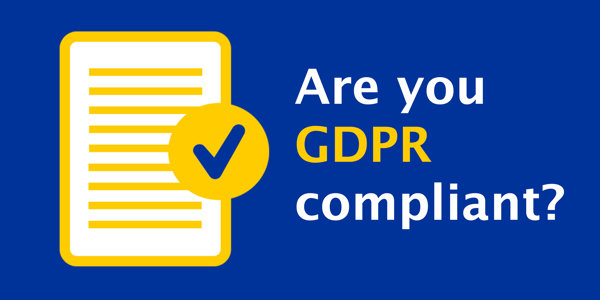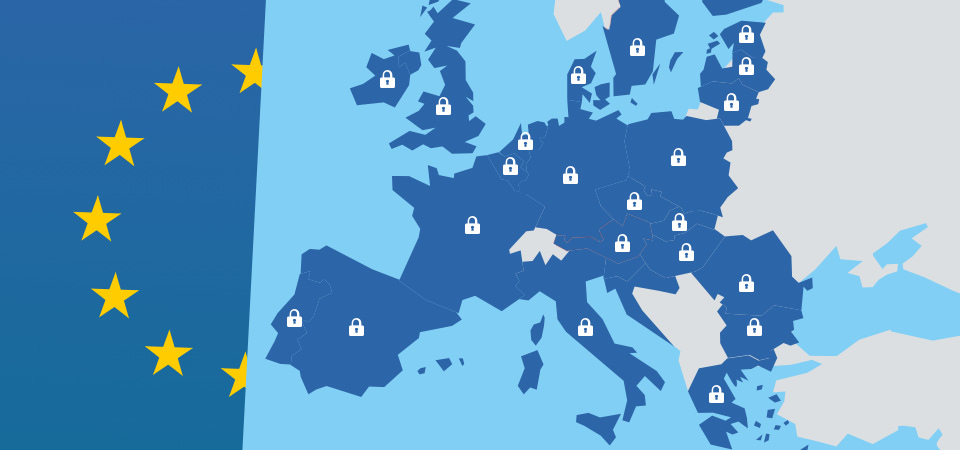The General Data Protection Regulation (GDPR) came into force across the European Union on May 25. The most comprehensive data protection modification in two decades, the GDPR includes 11 chapters and 91 articles meant to protect the rights of individuals as well as their personal data. Even though GDPR is aimed at positively impacting individuals and enterprises, the change is a significant one, and many businesses are unclear if they meet the criteria to be GDPR compliant. Moreover, they are unaware of the steps that must be taken before they can become GDPR compliant. One thing is sure: Ignorance is no defense if you are found to be noncompliant with the GDPR, and the penalties can be huge. We have created this comprehensive guide to help you figure out whether your company meets the new regulations:
Expectations from GDPR compliant organizations

According to Article 5 of the GDPR, a company must follow a series of principles meant to process and secure personal information. A risk-based approach ensures adherence to such principles. But an organization has complete control when it comes to the mitigation of operational risks connected to personal data processing. So, compliance with GDPR standards does not involve merely checking the right boxes. Instead, companies must protect consumer rights through behavioral and cultural changes within the organization.
An organization should follow the concept of “privacy of design” when considering hazards associated with personal data processing. This is not a new approach, but it poses problems during assessment or measurement. As per the 1998 Data Protection Act, organizations must adhere to six key principles when protecting personal data. Most UK organizations have adhered to these terms for the past two decades. However, the GDPR presents a chance to revisit these principles and establish proper controls given the increased technology usage in business.
How to know if your company is GDPR compliant
First, check whether your company meets the following criteria:
- Your organization must abide by the rules laid down by GDPR if it processes or collects information from citizens in the European Union.
- It is not necessary that your business is located in the EU. You could be located anywhere else in the world, but as long as you collect data from European residents, you must follow the guidelines.
- You need to seek permission for storing and using a person’s personal data. And you must notify them about what you intend to do with the gathered information.
- Collect the correct kind of active consent from EU users.
- The moment you detect a security breach, the supervisory authority must know about the incident within 72 hours. Implement the right protocols for this purpose. But under no circumstances should you risk people’s rights and freedom.
- Maintain electronic copies of private records and provide access to people who request it. Do not forget to mention the personal data you are processing, the storage location of the data, and why you require that information.
- It is the responsibility of your data controller to remove the personal data of individuals from the company database. At the same time, they should refrain from sharing the information with third parties, who also need to halt processing immediately.
- Allow people to transfer data from one controller to the other. For that reason, always hand over the personal data of an individual in a commonly used and machine-readable
- Implement data security in every process and product from the beginning.
- Make sure your data processors and data controllers appoint a data protection officer. But not every organization needs a DPO. They are a prerequisite at public authorities and organizations where data monitoring and processing are carried out on a major scale.
Audit the identified data
Make sure your company is aware of whose data they are dealing with and what the content of the data is. Keep records about how your business came into possession of the data and for how long you have had it.
- Clearly mention where the data came from. In case you received the data from a third party, ensure you have written assurances from them stating that they have the permissions necessary to own and share that particular information.
- Also, it might be a good idea to monitor how you intend to use the data. List all the available client details, including IP addresses, bank details, telephone numbers, and so on.
- Most importantly, do not keep any data that you do not need.
- Hold onto a piece of data only if you have a particular and legitimate cause. Never process it beyond that purpose.
Never share data outside of the EU

Under the new GDPR laws, restrictions exist on the transfer of personal data to countries outside the EEA (European Economic Area) that apparently do not provide sufficient protection, like the United States. If you mustT share data internationally, make sure you stick to the agreed rules, including the EU–U.S. privacy shield.
How does the evaluation process work?
When a data breach occurs within the organization, the Information Commissioner’s Office (ICO) often investigates the circumstances leading up to the breach. In the process, they judge or assess the suitability of a specific risk mitigation control.
The truth is, all professionals realize the importance of continuous professional development. If a company implements a system of continuous improvement and review, then the GDPR principles will be respected.
What about clients you’re already dealing with?

You probably have an agreement with your clients already. But if you’re storing their data in the cloud, you must renew your agreement. Why? Because the cloud that holds the server is considered a data processor. However, a written agreement is necessary. While the old data protection laws did not make a written agreement mandatory with data processors and clients, it is now necessary under GDPR laws.
Not GDPR compliant? Risks are rising
With business processes and technology evolving constantly, the associated risks to be GDPR compliant are increasing as well. Privacy by design and a cyber-aware culture are the only two options available for an organization to gain a strong position while maintaining the GDPR principles. It may sound alarming, but GDPR is a process — one that you should factor into every aspect of business and adopt as the norm.
Featured image: Wikimedia



